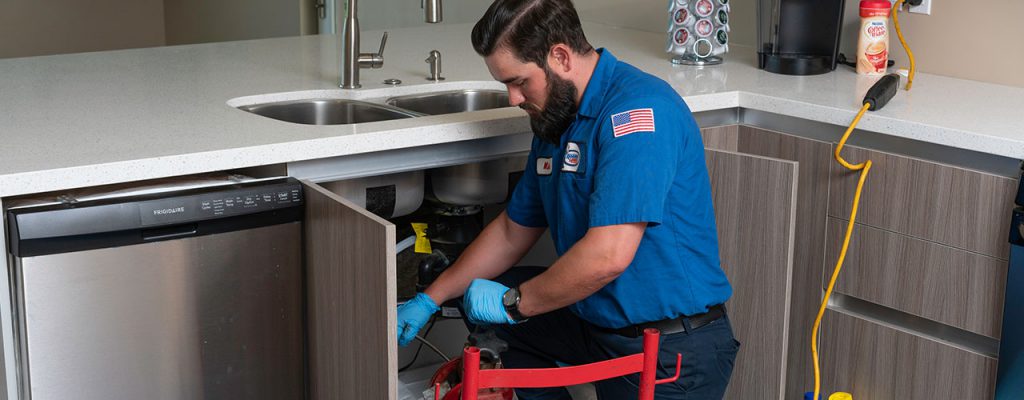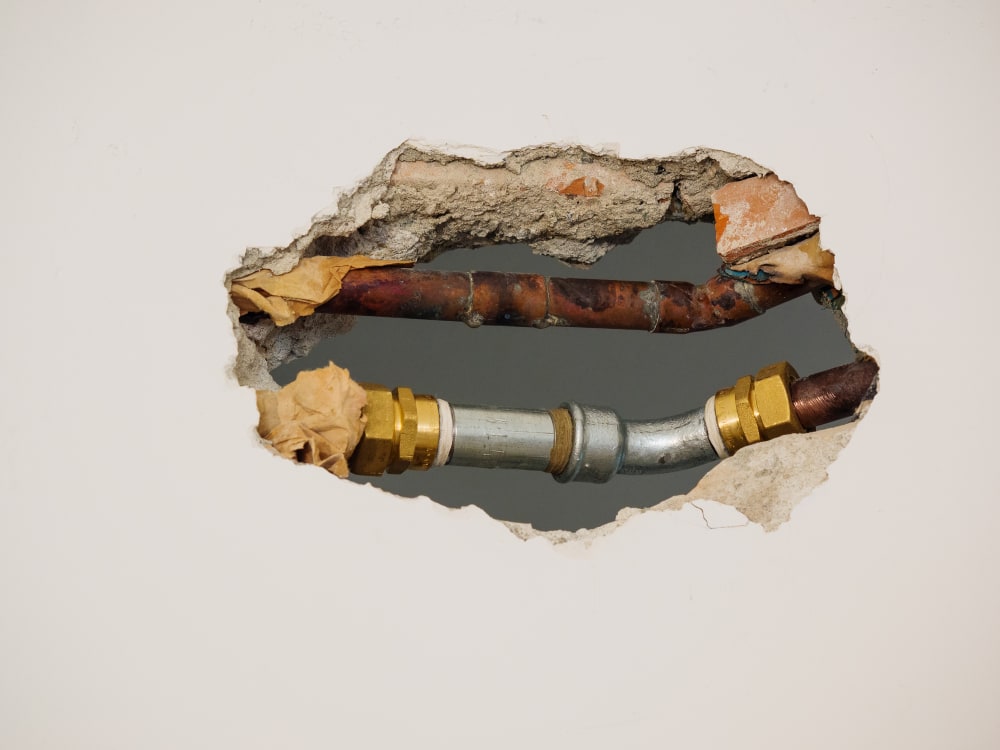Right here down the page you'll find a good deal of extremely good ideas around Common Plumbing Problems in Older Homes.

Older homes frequently feature appeal, personality, and history, yet they can likewise bring a host of pipes concerns. Whether you're taking care of maturing pipes, low tide pressure, or leakages, knowing exactly how to attend to these common issues is essential to keeping a safe and useful home. In this overview, we'll explore the regular plumbing challenges dealt with by older homes and give functional services to maintain your plumbing in top form.
Recognizing Common Pipes Issues
Aging Pipes
Among one of the most common issues in older homes is maturing pipelines. Relying on the age in which your home was developed, the pipelines might be made from products that have actually deteriorated in time, such as galvanized steel, cast iron, or perhaps lead. These materials can wear away, end up being weak, or create leakages, causing water damage and prospective carcinogen.
Water Top Quality Testing
Older pipelines can affect the high quality of your water. Conduct a water top quality test to check for contaminants such as lead, rust, or various other contaminations that may be introduced by aging pipelines.
Solutions for Typical Pipes Issues
Replacing Aging Pipes
If your home has old, wearing away pipelines, consider changing them with modern-day materials like copper or PEX. This can be a considerable financial investment, yet it will certainly prevent future issues and boost the safety and security and reliability of your plumbing system.
Repairing Low Water Stress
To deal with low water pressure, start by cleaning or replacing old fixtures and eliminating mineral accumulation in the pipelines. If the trouble persists, it may be necessary to replace sections of corroded pipelines.
Repairing and Replacing Leaking Pipes
For small leaks, you can use pipe clamps or epoxy putty as a short-term solution. Nonetheless, it's ideal to change dripping pipes completely to prevent more damages.
Updating Fixtures
Upgrading old fixtures to modern, water-efficient models can improve your home's plumbing performance and lower water intake. Seek components with the WaterSense tag for the very best performance.
Taking Care Of Pipeline Rust
If your pipes are corroded, changing them with corrosion-resistant products like copper, PVC, or PEX is the very best remedy. Routine assessments and water high quality maintenance can aid protect against additionally deterioration.
Low Tide Pressure
If you're experiencing low water stress, it could be due to mineral deposits, deterioration inside the pipes, or old fixtures that are no more operating effectively. This can be a significant inconvenience, especially in areas like showers and sinks.
Leaking Pipes
Leaks are another frequent concern in older homes, often triggered by rusty or worn-out pipelines. Even little leaks can bring about considerable water damage, mold development, and enhanced water bills otherwise addressed quickly.
Outdated Components
Outdated pipes fixtures such as faucets, commodes, and showerheads not just look old but might also be much less efficient, vulnerable to leaks, or incompatible with contemporary plumbing criteria.
Pipe Deterioration
Deterioration is a typical trouble in older pipes, particularly those made from galvanized steel or cast iron. Rusty pipes can restrict water circulation, cause staining, and eventually cause leaks or pipeline bursts.
Analyzing the Condition of Your Pipes
Examining Noticeable Pipelines
Begin by evaluating any noticeable pipes in your home, such as those in basements, crawl spaces, or under sinks. Seek indicators of corrosion, leakages, or rust, which can show underlying problems.
Looking for Leaks
Check for leakages by inspecting areas around faucets, bathrooms, and under sinks. You can additionally check your water meter before and after a period of no water make use of to spot hidden leaks.
When to Call an Expert
While some pipes issues can be managed with do it yourself options, there are times when it's ideal to hire an expert. If you're managing significant leakages, extensive rust, or are not sure regarding the condition of your pipelines, an accredited plumber can provide skilled analysis and repair.
Preventive Upkeep Tips
Regular Inspections
On a regular basis check your plumbing system for indicators of deterioration. Capturing concerns early can stop costly repairs down the line.
Water Pressure Guideline
Ensure your water stress is within the suggested range to prevent worrying your pipes and components. A plumbing professional can mount a pressure regulatory authority if required.
Water Quality Upkeep
Set up water filters or softeners if your water top quality is poor. This can secure your pipes and components from damage triggered by hard water or pollutants.
Aggressive Pipeline Replacement
If your home has older pipes, consider proactive replacement before significant issues occur. This can conserve you from emergency repair work and water damage.
Verdict
Taking care of plumbing issues in older homes needs a mix of watchfulness, preventive upkeep, and timely upgrades. By recognizing the common challenges and knowing when to look for specialist assistance, you can ensure your plumbing system continues to be functional and trustworthy for many years to come.
7 Common Plumbing Issues in Older Homes
Read More Plumbing Articles
Whether you're mulling over purchasing your dream period property, or you already own one, being aware of common plumbing problems in old homes can help you avoid expensive mishaps.
Many plumbing problems in old homes are similar to those faced in newer properties, but some are more prevalent in houses over a certain age. If you've recently bought an old house or haven't had your aging plumbing system inspected in a while, it's worth keeping an eye out for the following issues:
Bad Pipe Materials
Depending on the age of your home, the pipe materials used in your plumbing system may not comply with modern building codes and could be unsafe.
Lead pipes are the most dangerous type of old plumbing pipes. This metal was once used extensively for manufacturing water pipes because it's easy to shape and has a long lifespan. Plumbers also used it to solder joints between pipes made from other materials. However, lead can cause serious health problems, particularly in children. Drinking water from pipes containing lead can lead to lead poisoning symptoms, such as stomach pain and fatigue, so it's essential to replace them if you discover them in your home.
Outdated Fixtures
Even if the previous owners installed high-quality fixtures, these won't be immune to the effects of age and wear and tear. Over time, fixtures can corrode and wear down, increasing the likelihood of leaks and clogs.
Sometimes, an outdated fixture can be a minor irritation that makes using your plumbing system less convenient. However, it's best to maintain older plumbing components carefully and replace them when they show signs of failure to avoid a major leak and water damage.
Corroded or Leaking Pipes
Corroded pipes are a common plumbing issue in old homes. Corrosive substances in the water supply can gradually break down the metal used to make the pipes, eventually causing leaks. Corrosion can also cause sediment to build up, increasing the chances of a clogged pipe. All these issues take time to develop, making them more likely in old house plumbing.
Drain Problems
Older home drainage systems were often installed before the arrival of appliances such as garbage disposals, so they're frequently incapable of handling modern household usage. The result could be frequent clogs or water backing up into sinks and other fixtures.
A failing sewer line is the most serious drainage issue commonly encountered in old houses. This problem is more likely if you've remodeled your home to add more fixtures, placing more pressure on a sewer line not designed for the purpose. Eventually, the line can become clogged, causing unpleasant indoor smells, poor drainage and contaminated wastewater backing up into your fixtures.
Pipe Bellies
Pipe bellies develop when pipes buried in your home's foundation start sagging as the building settles. They create downward slopes, affecting water drainage and increasing the risk of significant blockages. You don't need to worry about pipe bellies in a pressurized main line, as the water pressure prevents the pipes from clogging, but they can cause issues in drain lines.
Root Intrusion
Root intrusion occurs when trees and other shrubs grow roots too close to your sewer line or water service line. Sometimes, the roots penetrate the pipe walls, leading to leaks and soft or wet areas in your yard.
Unfortunately, root intrusion is a more common plumbing problem in old homes. That's because older houses are more likely to have pipe bellies allowing standing water to accumulate, attracting roots to the moist conditions.
https://www.elocal.com/resources/home-improvement/plumbing/faq/plumbing-issues-in-older-homes/

Do you appreciate reading up on Plumbing Problems In Old Homes? Create a remark further down. We'd be delighted to know your views about this posting. We are looking forward to see you back again before long. Loved our blog? Please share it. Help other people discover it. We enjoy reading our article about Common Plumbing Challenges In Old Buildings.
Explore Now